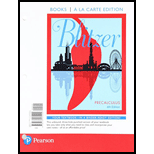
Concept explainers
The limit of the expression
Answer to Problem 1RE
Solution:
The value of the expression
Explanation of Solution
Given Information:
Consider the provided function is
Consider the provided expression is
As
Construct a table representing the number that the corresponding values of
Choose values of
Take
and find the corresponding value of
Thus,
Choose an additional value of
Take
and find the corresponding value of
Thus,
Choose an additional value of
Take
and find the corresponding value of
Thus,
List the values of
| 0.99 | 2.9701 |
| 0.999 | 2.997001 |
| 0.9999 | 2.99970001 |
From the above table, it is clear that, as
Now choose values of
Take
and find the corresponding value of
Thus,
Choose an additional number of
Take
and find the corresponding value of
Thus,
Again, select an additional number of
Take
and find the corresponding value of
Thus,
List the values of
| 1.01 | 3.0301 |
| 1.001 | 3.003001 |
| 1.0001 | 3.00030001 |
From the above table, it is clear that, as
Combine both the tables as follows:
| 0.99 | 2.9701 | 3.0301 | 0.99 |
| 0.999 | 2.997001 | 3.003001 | 0.999 |
| 0.9999 | 2.99970001 | 3.00030001 | 0.9999 |
The tables show the values of
Thus as
get closer to 3.
Therefore,
Want to see more full solutions like this?
Chapter 11 Solutions
Precalculus, Books A La Carte Edition Plus MyLab Math with eText -- Access Card Package (6th Edition)
- Find the exact area inside r=2sin(2\theta ) and outside r=\sqrt(3)arrow_forwardA 20 foot ladder rests on level ground; its head (top) is against a vertical wall. The bottom of the ladder begins by being 12 feet from the wall but begins moving away at the rate of 0.1 feet per second. At what rate is the top of the ladder slipping down the wall? You may use a calculator.arrow_forwardExplain the focus and reasons for establishment of 12.4.1(root test) and 12.4.2(ratio test)arrow_forward
- Use 12.4.2 to determine whether the infinite series on the right side of equation 12.6.5, 12.6.6 and 12.6.7 converges for every real number x.arrow_forwarduse Cauchy Mean-Value Theorem to derive Corollary 12.6.2, and then derive 12.6.3arrow_forwardExplain the focus and reasons for establishment of 12.5.4arrow_forward
 Calculus: Early TranscendentalsCalculusISBN:9781285741550Author:James StewartPublisher:Cengage Learning
Calculus: Early TranscendentalsCalculusISBN:9781285741550Author:James StewartPublisher:Cengage Learning Thomas' Calculus (14th Edition)CalculusISBN:9780134438986Author:Joel R. Hass, Christopher E. Heil, Maurice D. WeirPublisher:PEARSON
Thomas' Calculus (14th Edition)CalculusISBN:9780134438986Author:Joel R. Hass, Christopher E. Heil, Maurice D. WeirPublisher:PEARSON Calculus: Early Transcendentals (3rd Edition)CalculusISBN:9780134763644Author:William L. Briggs, Lyle Cochran, Bernard Gillett, Eric SchulzPublisher:PEARSON
Calculus: Early Transcendentals (3rd Edition)CalculusISBN:9780134763644Author:William L. Briggs, Lyle Cochran, Bernard Gillett, Eric SchulzPublisher:PEARSON Calculus: Early TranscendentalsCalculusISBN:9781319050740Author:Jon Rogawski, Colin Adams, Robert FranzosaPublisher:W. H. Freeman
Calculus: Early TranscendentalsCalculusISBN:9781319050740Author:Jon Rogawski, Colin Adams, Robert FranzosaPublisher:W. H. Freeman
 Calculus: Early Transcendental FunctionsCalculusISBN:9781337552516Author:Ron Larson, Bruce H. EdwardsPublisher:Cengage Learning
Calculus: Early Transcendental FunctionsCalculusISBN:9781337552516Author:Ron Larson, Bruce H. EdwardsPublisher:Cengage Learning





